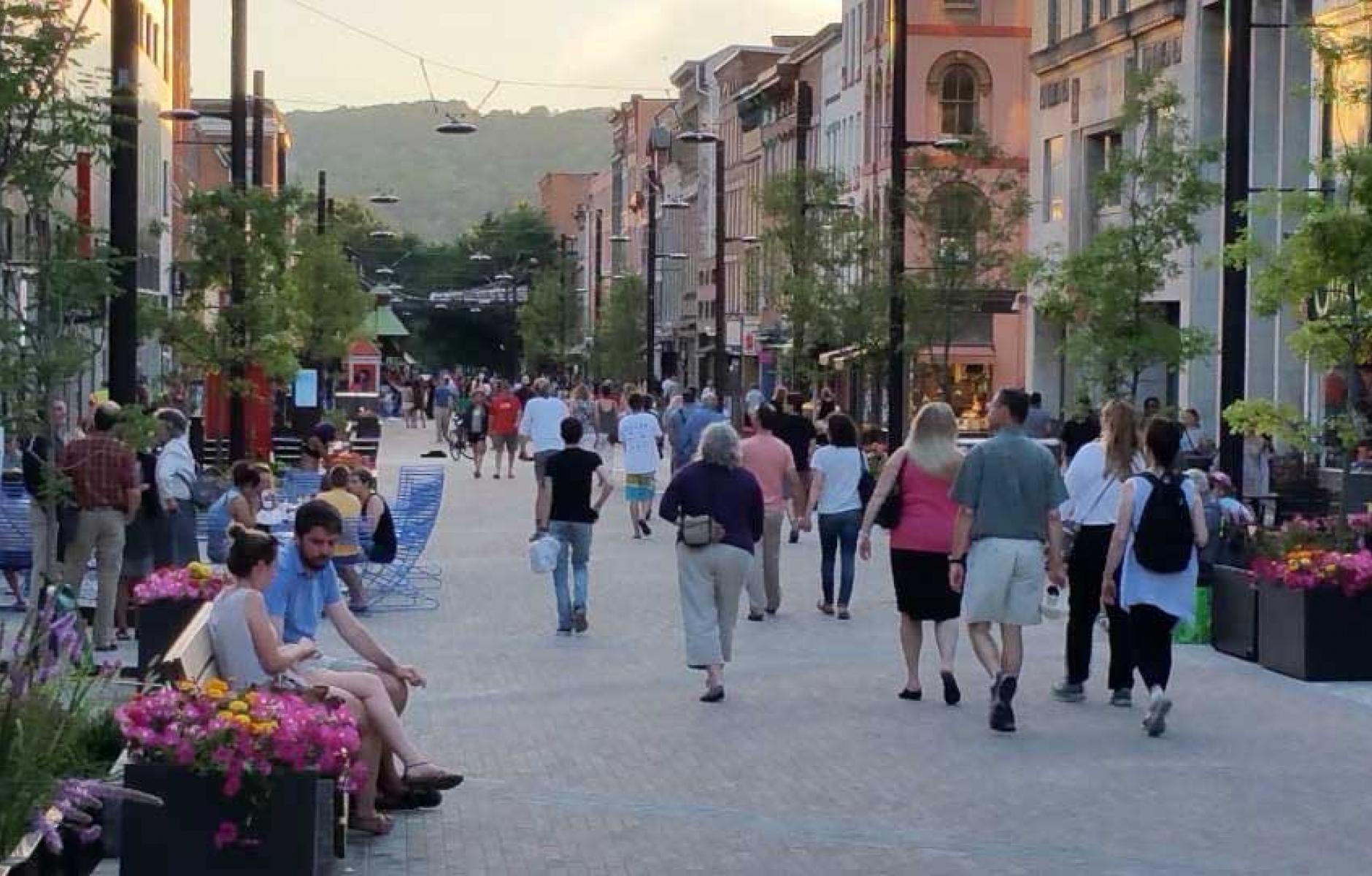
What is a livable community, anyway?
A walkable community is the most common term to describe the alternative to drive-only suburbia. Yet walking is so basic to human life that we often take it for granted. Perhaps a more inspiring term is livability.
Former US Transportation Secretary Ray LaHood defined livability as "a community where you can take kids to school, go to work, see a doctor, go to the grocery store, have dinner and a movie, and play with your kids in a park, all without having to get into a car.”
A walkable community is a livable community, according to the plainspoken LaHood, a Republican who worked in the Obama administration. Walkability allows for access, connection, and diversity of experience.
The concept is a profound one: Life changes depending on whether a community is built around walking or driving.

A livable community, and how it differs from a place designed around driving, means the following:
Freedom of mobility. A walkable community is drivable as well. But the reverse is not true. Once a place is built around driving, walking is impractical for most purposes. The need to get around by car for every errand is not really freedom. The car is your master. How hard do you have to work to pay the $8,700 average cost to own a car (according to AAA)? When it breaks down, you are stuck.
The livable city is the freedom to own a car—but drive it less. If you drive 5,000 miles a year, instead of 15,000 or 20,000, you can keep it three times longer and save about $5,000 a year. So, a livable community means the option of saving money. Or you can give up car ownership entirely and save even more, using your feet, a bicycle, transit, car-share, and/or car rentals at times.
A livable community is choice.
A public realm. Streets belong to the people in a livable community. Well-designed public spaces attract people. Enrique Penalosa, the dynamic former mayor of Bogota, Columbia, notes, “Great public space is a kind of magical good. It never ceases to yield happiness. It is almost happiness itself.”
Streets for cars are places to move through quickly: They offer little to enjoy or appeal to the senses once you step out of the vehicle. In a drive-only community, the best public square may be a Walmart parking lot.
A well-designed public realm serves many purposes. Yes, it accommodates cars—but it also allows children to walk to school. It connects you to your neighbors. It supports festivals and parades and public speech.
The enjoyment of public art and architecture. Towns and cities themselves are art. You can’t see it at 50 mph or very clearly at 30 mph—you must walk, bike, or drive slowly. The art of community building brings us together. When a town is designed at a drive-only scale, the art of building a community atrophies and is eventually forgotten.
Diversity and proximity. The livable community mixes the elements of a community together in a rich gumbo of culture. The livable city is not a monoculture of single-family subdivisions, connected to arterial roads. The livable community is not boring. It invites you to walk to the café, to parks, to the museums and restaurants.
The livable city is the five or 10-minute walk from the tavern where you’ve had a few drinks with friends back home. DUI is not a fear in the livable city.
Livable communities are improved by diversity and proximity.
A festive place. A community with public spaces designed for events offers more opportunity to celebrate with your neighbors. These public spaces are active 365 days a year—not just during special occasions—because they are surrounded by active buildings and neighborhoods.
A healthy place. The livable town puts exercise into you daily life, making you and your family healthier without a membership to a gym. The livable city allows children to walk to school, getting the arms and legs moving at the beginning and end of the school day. A livable town has parks and playgrounds that people of all ages can walk to. In a livable community the children play—at least sometimes—without the parents setting up a “play date.” A livable community has access to locally grown fresh fruits and vegetables—usually offered at an outdoor farmer’s market. A livable community supports social connections and mental health.
A place for chance encounters. A livable community is one where you see the doctor, school teacher, or plumber at the park, grocery store, or a community event. They know who you are and greet you. People get to know one another in many ways. This quality may seem less important in the era of Facebook and Twitter, but it is more important than many of us realize. Nothing will ever replace real-world encounters.
Value. The art of mixing uses in proximity creates value, promotes commerce, and meets a growing market demand.
Livable communities are closer, physically, to the neighborhoods where your grandparents were raised than to the isolated techno-utopia of the Jetsons (where is my jet-pack, by the way?). Livable communities look more like what a child would create if you asked them to build a village, neighborhood, or main street from blocks. Livable communities are hard-wired into the human race. (Self-driving cars will not change that).
Livable communities are real communities.




